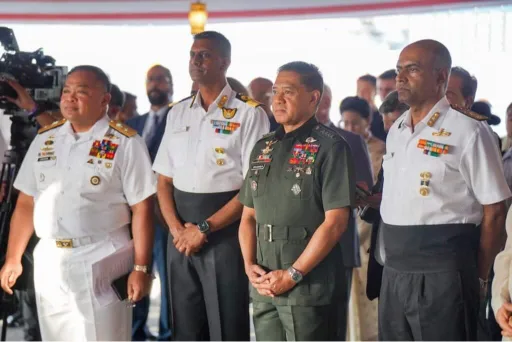As China’s maritime ambitions grow, India teams up with the Philippines for its first-ever coordinated naval patrols in contested waters, sending a clear message about regional cooperation and presence.
A First in Military Cooperation and Diplomacy
For the first time, India and the Philippines have kicked off joint naval drills in the South China Sea, a move that coincides with Philippine President Ferdinand Marcos Jr’s official visit to India. His trip, running from August 4–7, includes meetings with President Droupadi Murmu, Prime Minister Narendra Modi, and top Indian officials.
While Marcos tours Delhi, Indian Navy warships have arrived in Manila for what’s being described as a “maritime cooperative activity.” The timing is deliberate and diplomatic, a blend of ceremony and strategic signaling.
Why It Matters: Context of the South China Sea
The South China Sea has become a geopolitical pressure point, with China steadily expanding its military footprint. The Philippines, with overlapping maritime claims, has been vocal about pushing back. By aligning with India, it’s expanding its network of maritime allies, joining the ranks of the US, Japan, Australia, and others.

For India, this marks a shift. It’s moving from cautious diplomacy to more active participation in the Indo-Pacific, projecting power and partnership beyond its immediate neighborhood.
India’s Naval Presence: Ships That Speak Strategy
Four Indian naval ships docked in Manila ahead of the patrols:
- INS Delhi (D61) – Guided missile destroyer
- INS Shakti – Fleet tanker
- INS Kiltan (P30) – Anti-submarine warfare corvette
- INS Sandhayak – Advanced surveillance vessel
This isn’t just symbolic. These vessels form a versatile maritime force capable of multirole operations — a display of India’s reach and reliability as a security partner.
Quiet but Clear Message to Beijing
The joint patrols were described by officials as a demonstration of “enduring friendship and growing cooperation.” Philippine Armed Forces Chief Gen. Romeo Brawner Jr. called it a “clear demonstration” of mutual commitment to free navigation and international maritime law.
It’s also a message: India isn’t sitting out regional tensions. It’s stepping in with strategic, but measured, involvement.
Defence Ties: Not Just Missiles Anymore
This isn’t the first step in India–Philippines defence relations. In 2022, Manila became the first overseas buyer of India’s BrahMos missile system, sealing a $375 million deal. That agreement was a breakthrough, but joint patrols take cooperation to another level, operational partnership.
India’s Indo-Pacific Strategy in Action
This drill is more than a headline. It marks India’s transition toward a more assertive Indo-Pacific strategy. It shows that India can operate far beyond its own waters, and is willing to stand with countries facing pressure from China.
It also represents diversification. India is strengthening bilateral ties outside the Quad framework (US, Japan, Australia, India), especially with ASEAN countries like the Philippines, which are directly impacted by China’s moves.
The Bigger Picture
India’s growing naval footprint is now being matched with political alignment and real-time cooperation. By joining a country that successfully challenged China in international court in 2016, India is also backing the global rule of law, particularly the UNCLOS framework.
These joint drills show that India’s Indo-Pacific commitments aren’t just policy papers anymore, they’re playing out in the water, side-by-side with allies who need them.
